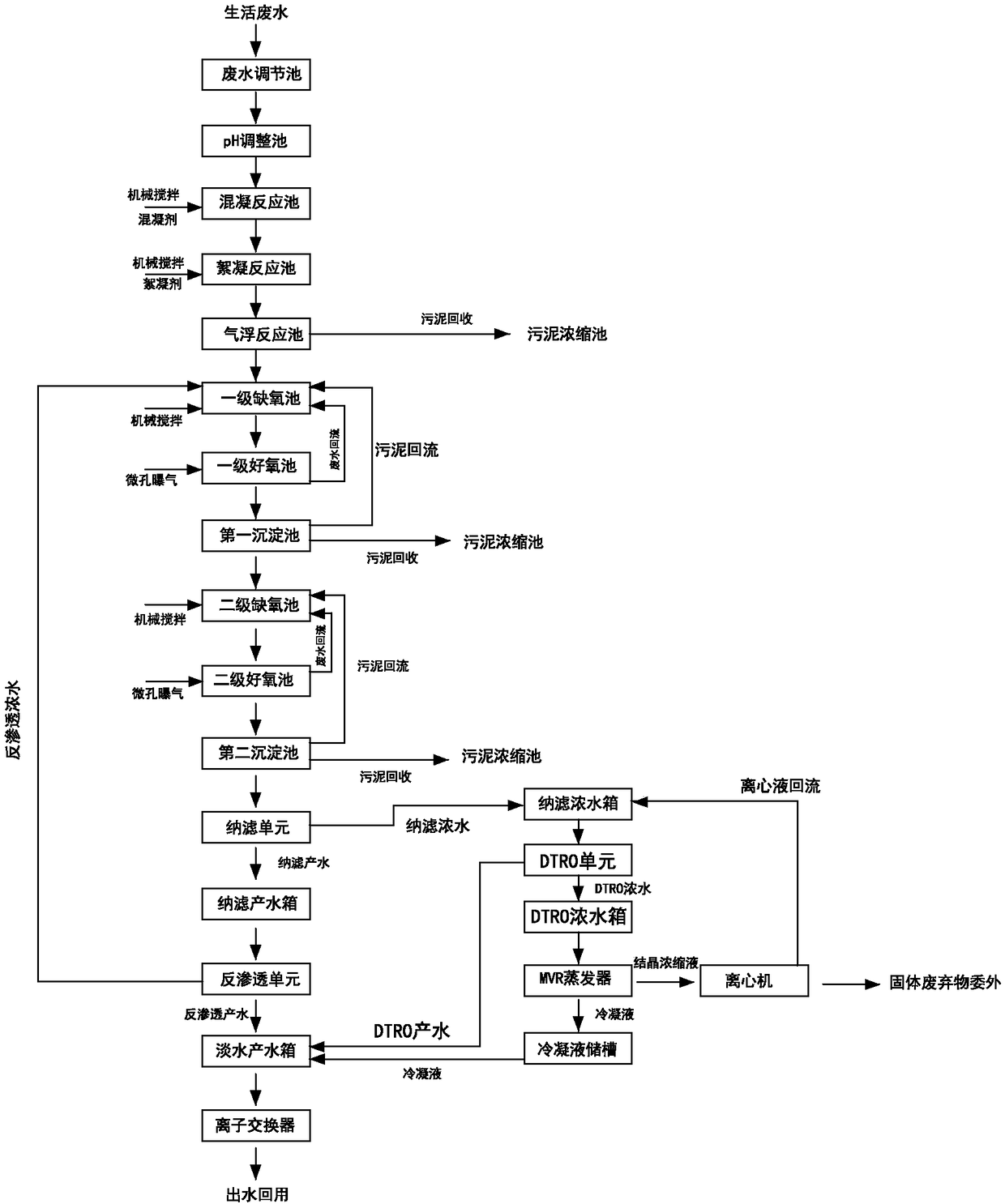Treatment method for textile industrial waste water
A technology of textile industry wastewater and treatment method, which is applied in the direction of textile industry wastewater treatment, multi-stage water treatment, water/sewage treatment, etc., can solve problems such as equipment shutdown, replacement of parts, equipment depreciation and wear, and negative effects of treatment processes.
- Summary
- Abstract
- Description
- Claims
- Application Information
AI Technical Summary
Problems solved by technology
Method used
Image
Examples
Embodiment 1
[0090] Sampling and analysis of wastewater from a textile industry shows that the basic properties of the wastewater are: ammonia nitrogen: 100-160mg / L, total nitrogen: 120-180mg / L, COD cr : 2000~2600mg / L, Chromaticity: 200~400 times, PH: 6~8, SS: 120~400mg / L, Conductivity: 1500~2000us / cm, Wastewater generation: 240m 3 / d.
[0091] Follow the steps below to treat the waste water:
[0092] (1), adjust the pH value: pump the textile wastewater in the wastewater adjustment tank into the pH adjustment tank with a lift pump, then adjust the pH value of the wastewater to 8 according to the water quality characteristics of the wastewater;
[0093] (2), coagulation and air flotation treatment: after the waste water is treated in the step (1), it first enters the coagulation reaction tank, and a 10% polyaluminum chloride aqueous solution is added, and the dosage is 600 mg / L , stirred and reacted for 15 minutes, then entered the flocculation reaction tank, and added a polyacrylamide a...
Embodiment 2
[0107] Sampling and analysis of wastewater from a textile industry shows that the basic properties of the wastewater are: ammonia nitrogen: 80-130mg / L, total nitrogen: 90-150mg / L, COD cr : 1600~2200mg / L, chromaticity: 160~360 times, PH: 7~8, SS: 160~430mg / L, conductivity: 2500~4000us / cm, waste water generation: 1200m 3 / d.
[0108] Follow the steps below to treat the waste water:
[0109] (1), adjust the pH value: pump the textile wastewater in the wastewater adjustment tank into the pH adjustment tank with a lift pump, then adjust the pH value of the wastewater to 8 according to the water quality characteristics of the wastewater;
[0110] (2), coagulation and air flotation treatment: after the waste water is treated in the step (1), it first enters the coagulation reaction tank, and adds a polyaluminum chloride aqueous solution with a concentration of 12%, and the dosage is 700 mg / L , stirred and reacted for 20 minutes, then entered the flocculation reaction tank, and adde...
PUM
| Property | Measurement | Unit |
|---|---|---|
| Conductivity | aaaaa | aaaaa |
| Conductivity | aaaaa | aaaaa |
| Conductivity | aaaaa | aaaaa |
Abstract
Description
Claims
Application Information
 Login to View More
Login to View More - R&D
- Intellectual Property
- Life Sciences
- Materials
- Tech Scout
- Unparalleled Data Quality
- Higher Quality Content
- 60% Fewer Hallucinations
Browse by: Latest US Patents, China's latest patents, Technical Efficacy Thesaurus, Application Domain, Technology Topic, Popular Technical Reports.
© 2025 PatSnap. All rights reserved.Legal|Privacy policy|Modern Slavery Act Transparency Statement|Sitemap|About US| Contact US: help@patsnap.com

